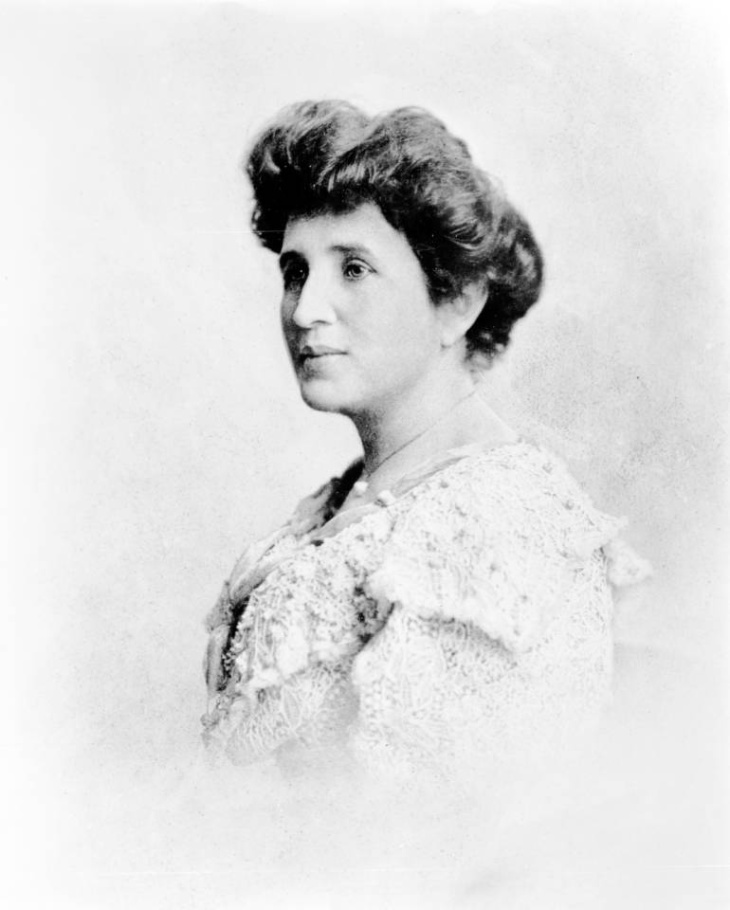
Our news is free on LAist. To make sure you get our coverage: Sign up for our daily newsletters. To support our non-profit public service journalism: Donate Now.
When 22-year-old Daeida Hartell married 51-year-old real estate developer Harvey Wilcox in 1883, she had no idea she would go on to establish one of the most famous locales in the world or cement her destiny as the mother of Hollywood.
Born in 1861 in a small Ohio town called Hicksville (yes, really), Daeida grew up a devout Episcopalian and worked for a time as a milliner. She inherited her spirit of adventure and a love for the outdoors from her family, which had first settled in Rootstown in 1804.
Although Harvey Wilcox was 30 years her senior, he and Daeida shared a strong sense of religion and idealism. As a child, Harvey had been crippled from the knees down after contracting polio. To cope with his decreased mobility, he became an avid horseman. He worked as a cobbler but earned a small fortune in real estate in Kansas. In 1883, he and his new bride headed west and settled in Los Angeles, where they bought a house at 11th Street and Figueroa Boulevard (it's now part of USC).
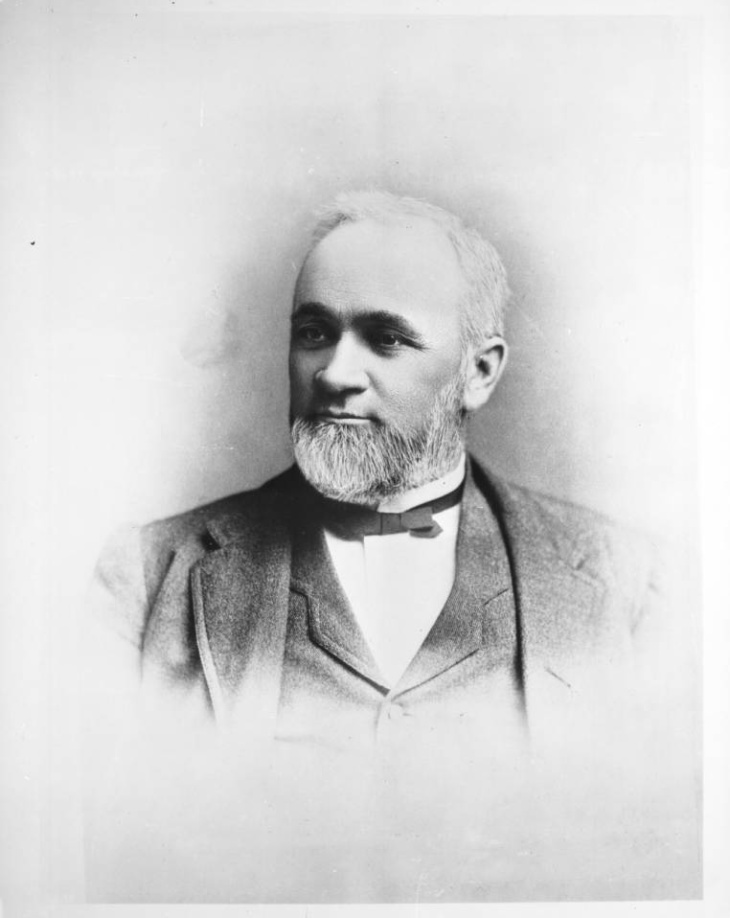
"Harvey decided he wanted to be a gentleman farmer," says Ann Otto, a distant relative of Daeida and author of the historical novel Yours In A Hurry. The couple tried raising figs and apricots but Harvey got bored and went back into real estate, according to Otto.
Daeida stayed home and took care of their first child while developing techniques for drying figs. The death of their 19-month-old boy left the couple grief stricken. They found solace by taking carriage rides around Los Angeles, much of which was still unpaved and undeveloped. Daeida became especially fond of the Cahuenga Valley and took a particular interest in an abandoned fig orchard around Pass Road and Prospect Avenue.
The Wilcoxes bought four separate parcels of land bordered by what is now Gower Street, Whitley Avenue, Sunset Boulevard and Franklin Avenue. In 1887, Harvey registered a "Map of Hollywood" with the L.A. County Recorder's Office. Glen Creason with the History and Genealogy Department at the Los Angeles Public Library explains says during that era, registering a map meant it had been presented to "the L.A. County Board of Supervisors to be recognized as accurate."
In an essay in the book Los Angeles in Maps, Creason writes:
"Wilcox hatched a plan to develop a perfect suburb and set about to buy up the land, subdivide some 640 acres and create the city of Hollywood... This map, distributed by Wilcox from his Spring Street realty office paints a rosy picture of that dream with the Pacific Ocean, seemingly just a stones throw from the perfect grid layout spreading out from the main intersection of Prospect and Weyse (later Vine street). The campaign that launched this map promised choice land with ocean views, two railroads, a grand hotel, Sunset Boulevard one hundred feet wide and six miles long, concrete walks and fine water for the 'future home of the wealthy.' This piece of paradise was just $350 an acre."
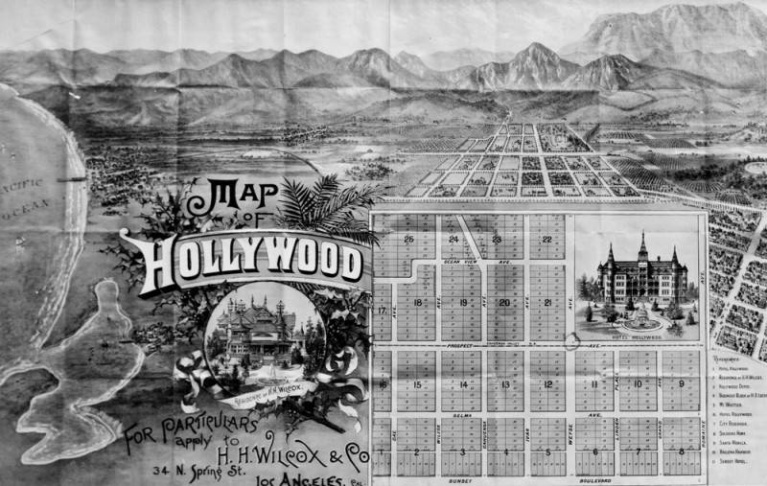
Daeida was reportedly the one who chose the name. According to Gregory Paul Williams in his book The Story of Hollywood, she had been riding a train back to Ohio when she had supposedly heard the word "Hollywood" from a woman who owned an Illinois estate with the same name. Harvey agreed with Daeida it was the perfect moniker for their utopian community.
The two of them envisioned a town where alcohol, gambling and prostitution were forbidden and religion was the foundation of the community. By the early 1900s, Prospect Avenue, later renamed Hollywood Boulevard, would house churches representing every major Christian denomination, according to Williams.
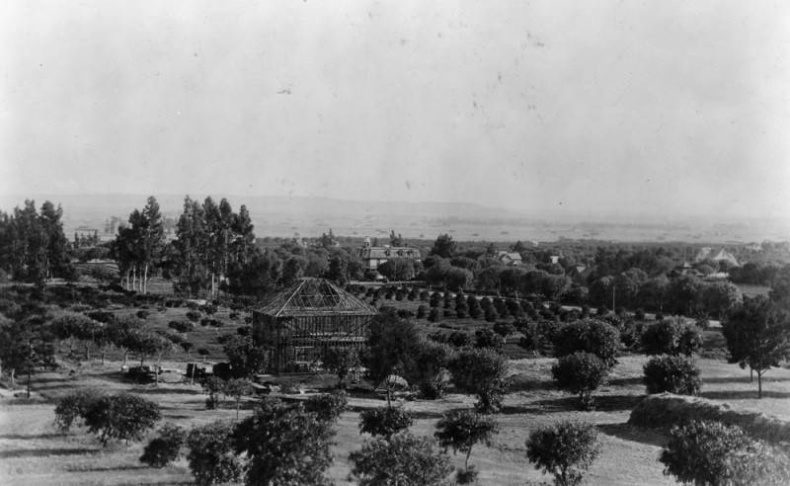
Harvey and Daeida relished their new roles as town founders. They planted rows of pepper trees and later added streets following those paths. Williams writes:
"During rest breaks and lunches, Harvey and Daeida sat in the shade of the fig barn near Prospect Avenue and Pass Road, refining his map of Hollywood with its ramrod-straight streets, parks and picnic grounds. The two amused themselves creating street names... For a personal touch, there was a street for Harvey — Wilcox Avenue, and one for Daeida — Dae Avenue (later Hudson Avenue and Schrader Boulevard). They named two streets after the children of Mr. Weid, the Dane who farmed plots of land around Nopalera... His two children crossed the Wilcox property daily on their way to a one-room school at Sunset and Gordon. Daeida named the children's path after them, Ivar and Selma Avenues."
Not long into their new venture, tragedy would again strike Daeida. Harvey passed away on March 19, 1891. Shortly before his death, the real estate market had taken a turn for the worse. Although she faced financial difficulties and water shortages from a long drought, Daeida refused to give up on her dream of a Christian temperance community.
Three years after Harvey's death, 33-year-old Daeida, met and married 43-year-old Philo Beveridge, the son of former Illinois governor John Beveridge. She would give birth to four children, two of which would die young. Otto notes how different Philo was from Harvey. "He was a tall, blonde, handsome businessman, but not focused. He bounced around from different things," she says. This included a failed water heater business.
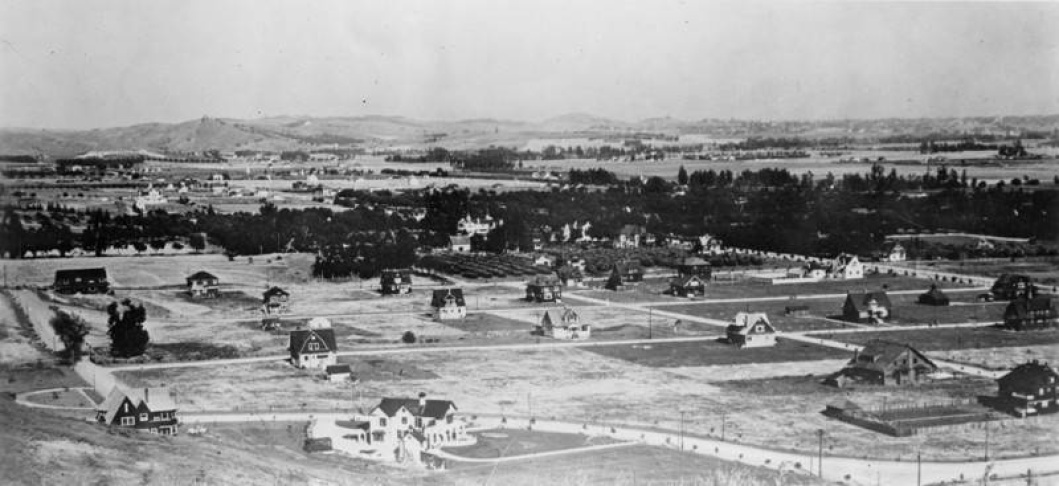
Daeida and Philo opened a real estate office on the corner of Hollywood and Cahuenga boulevards, and Daeida became more engaged in philanthropic endeavours. "She had so much power and was a force in the community," Otto says. She donated land for a city hall, post office, library, police station, banks, churches and even turned her fig barn into a primary school.
"They sold lots mostly to conservative Midwesterners who strongly agreed with Harvey Wilcox's hatred of alcohol," Williams writes in The Story of Hollywood.
By the early 1900s, Hollywood had become a community of large, beautiful homes dotted with citrus groves. Residents hosted lawn parties, played tennis and held an annual Mayday celebration with a four mile-parade down Hollywood Boulevard.
Daeida brought in Hollywood's first celebrity resident, French artist Paul De Longpre, who was famous for his watercolors of flowers. In Los Angeles, he found a wide variety of flora blooming year round. Daeida had met him at an exhibition in 1901, and when he told her he wanted to move to Hollywood, she gave him some land near her home, at Cahuenga and Prospect, then moved her family to a nearby farmhouse. The De Longpre estate, opened to the public in 1901, attracted tourists from around the world who came to stroll its verdant grounds.
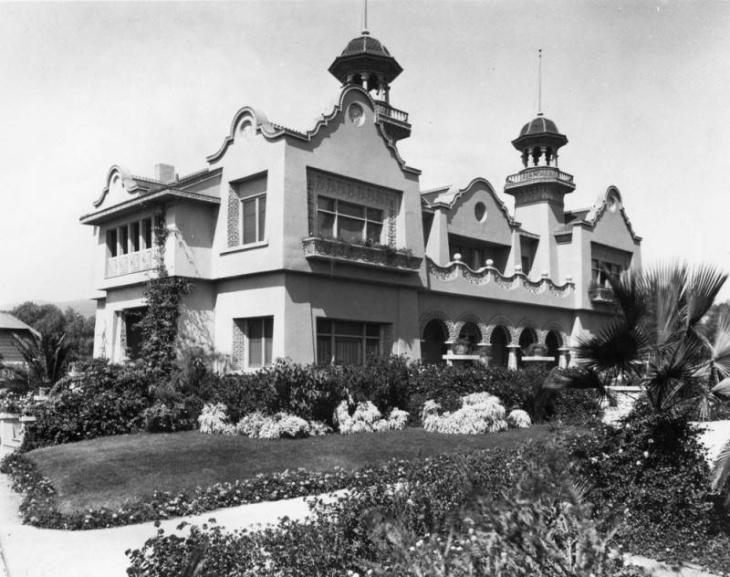
By 1903, Hollywood had approximately 700 residents and they decided to incorporate as an independent city. Daeida did not support the decision. If she had been allowed to vote, she almost certainly would've voted against it. According to Williams, "Daeida Beveridge considered the action too costly. Additionally, she felt having the name Hollywood applied beyond her housing subdivision did not benefit her family's interests."
Hollywood's independence turned out to be short lived. The new city couldn't solve its sewage problem and, Williams writes, "The city of Los Angeles refused to share any Owens Valley water with the community unless they became a part of the larger city."
In 1910, Hollywood became a district of Los Angeles. What had once been a rustic temperance community was defenseless against, "the blight that consumed Los Angeles at the end of the twentieth century," Williams writes, and was now subjected to taxes and assessments from L.A. officials.
Daeida Wilcox Beveridge died of cancer in 1914, at age 53, just as the movie industry was coming to Southern California, ushering in a new era of prosperity and licentiousness. Although Hollywood is as much an imagined place as a real one, her legacy remains etched in the street names and buildings still scattered throughout the area.
WE LOVE TO ANSWER YOUR QUESTIONS
"Hollywood" - Google News
August 19, 2020
https://ift.tt/34ckDle
The 'Mother Of Hollywood' Envisioned A Christian Utopia Free From Alcohol, Gambling And Prostitution. How'd That Work Out? - LAist
"Hollywood" - Google News
https://ift.tt/38iWBEK
Shoes Man Tutorial
Pos News Update
Meme Update
Korean Entertainment News
Japan News Update
Bagikan Berita Ini














0 Response to "The 'Mother Of Hollywood' Envisioned A Christian Utopia Free From Alcohol, Gambling And Prostitution. How'd That Work Out? - LAist"
Post a Comment